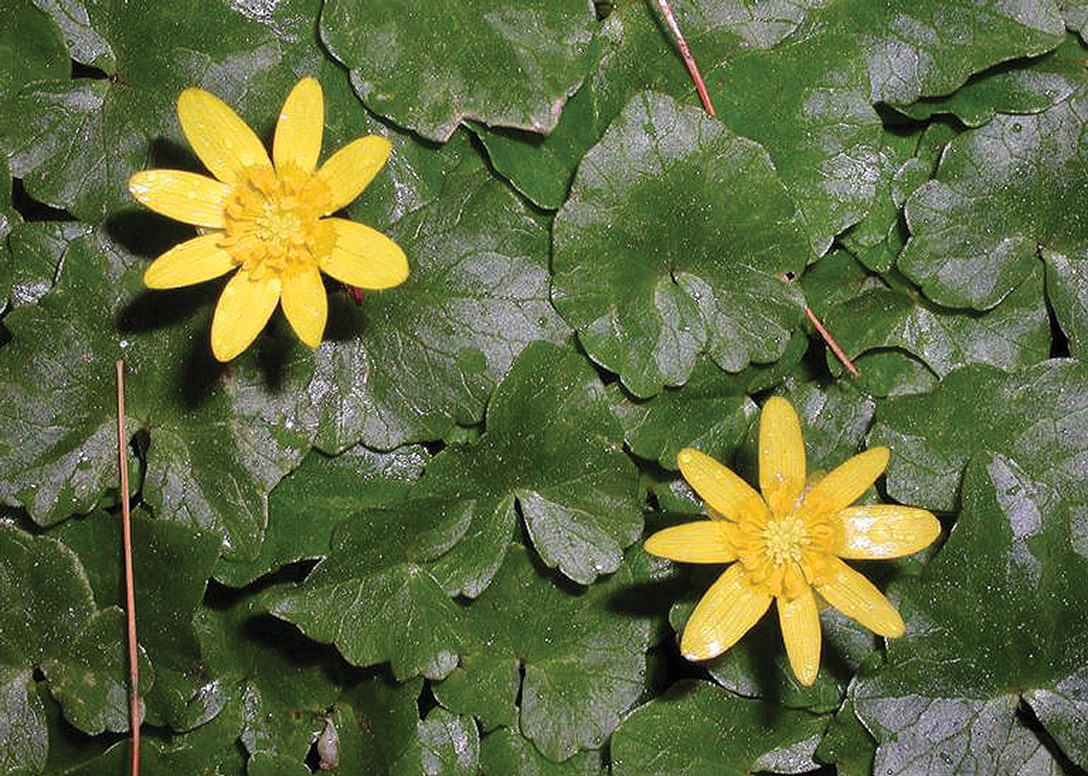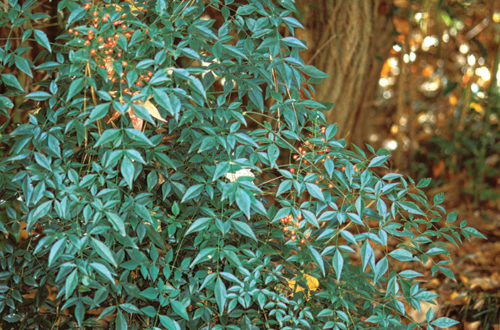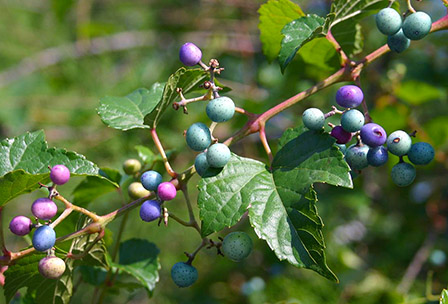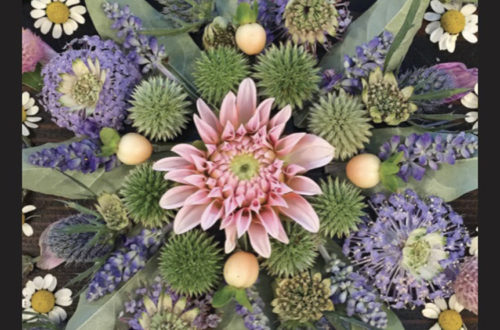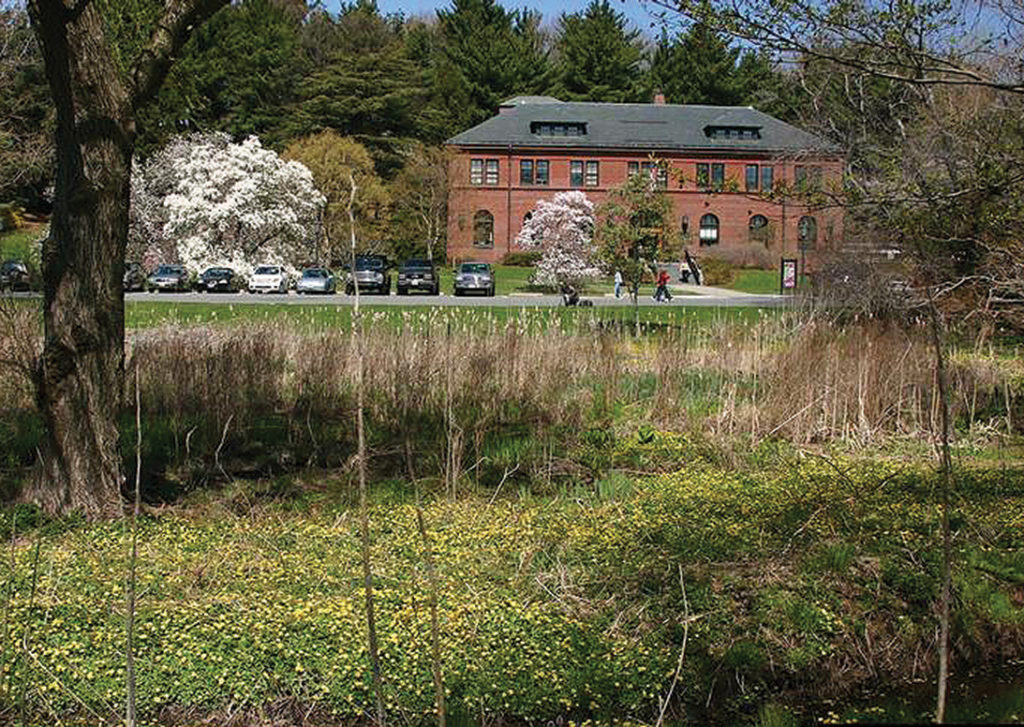
JULY-AUG 2016 – There’s been a lot of buzz lately about fig buttercup, also known as lesser celandine and a bunch of other names. It’s been on Connecticut’s Invasive Plant List since the beginning, but we’ve been hearing more about it over the past year or so. You can check out the official list at the website of the Connecticut Invasive Plant Working Group at cipwg.uconn.edu
Its botanical name used to be Ranunculus ficaria and it had the same genus name as buttercups. However, its name was recently changed to Ficaria verna.
Fig buttercup’s yellow flowers, which may be darker in the center, have 6 to 26 (usually 8) petals. Double-flowered versions have been observed.
The flowers are carried on a stalk that rises above the shiny green foliage. The leaves are kidney or heart-shaped and sometimes have reddish-brown splotches. It has three light-green sepals.
It also has numerous fingerlike root tubers and produces cream-colored bulblets at the leaf axils after flowering. These bulblets are sometime called bulbils or tubercules.
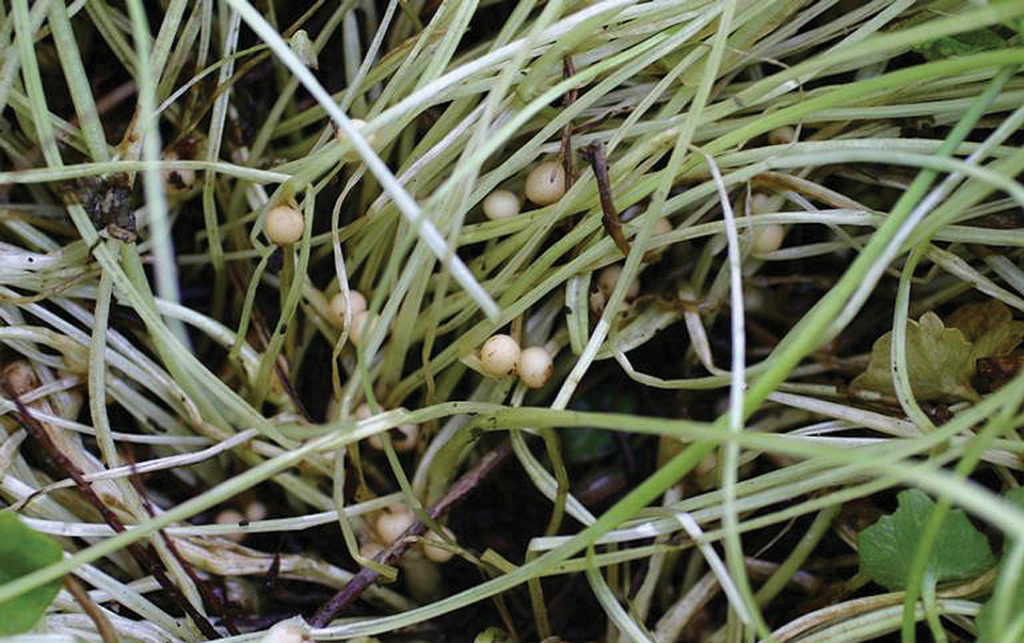
Fig buttercup is considered invasive because it spreads vegetatively and creates a dense carpet that can dominate an area, especially on floodplains.
Each tuber and bulblet can grow into a separate plant. If you pull it, make sure you get all of the root tubers and the above-ground bulblets which float and can be distributed by flood waters. Seed production is said to be erratic and probably varies with the subspecies.
You’ll see the bulblets on the ground after the adult plant senesces. Early colonial farmers, unsure where the bulblets came from, called it “potato rain.”
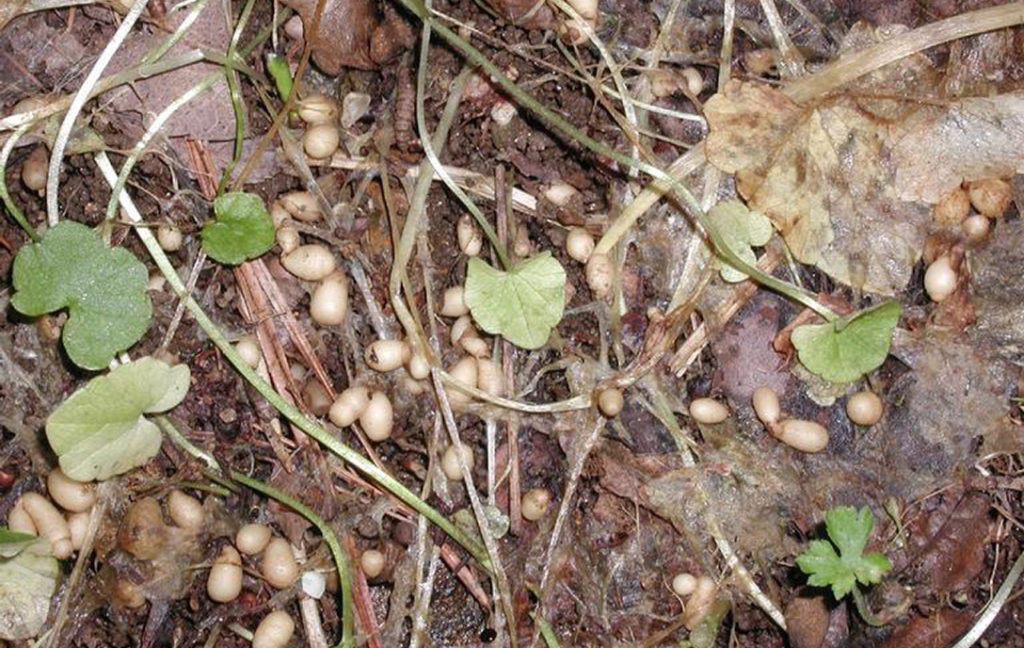
Life Cycle
Fig buttercup is a vernal perennial that thrives in damp shade. It spends much of the year underground. During the winter, it starts sending out leaves in preparation for spring flowering. The tubers produce a new rosette. The show is usually over by June.
Since it emerges early, it has a developmental advantage over native plants that provide pollen and nectar to pollinators. In a garden setting, it will compete with spring bulbs and perennials.
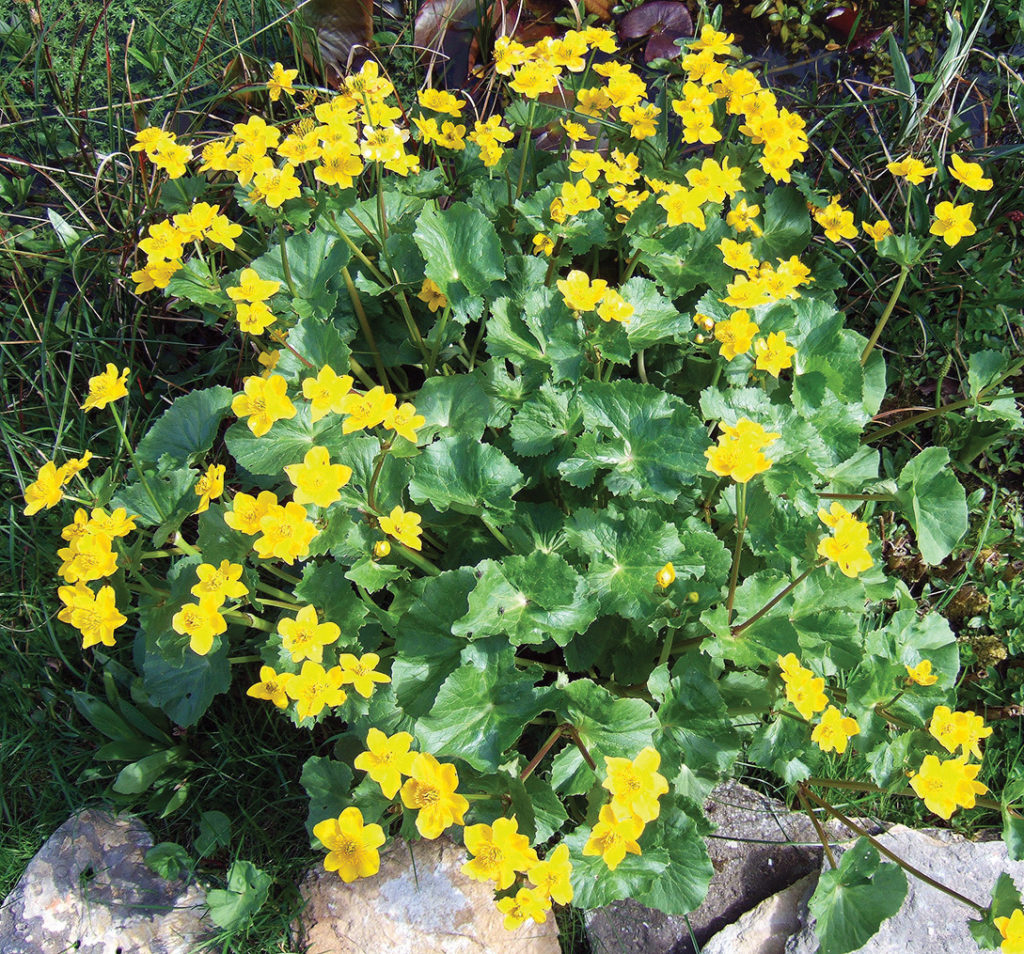
Native Look-alike
Don’t mistake it for our native marsh marigold (Caltha palustris). Marsh marigold has 5 to 9 (usually six) petal-like sepals and lacks the root tubers and bulblets. It does not grow in large masses, so double check!
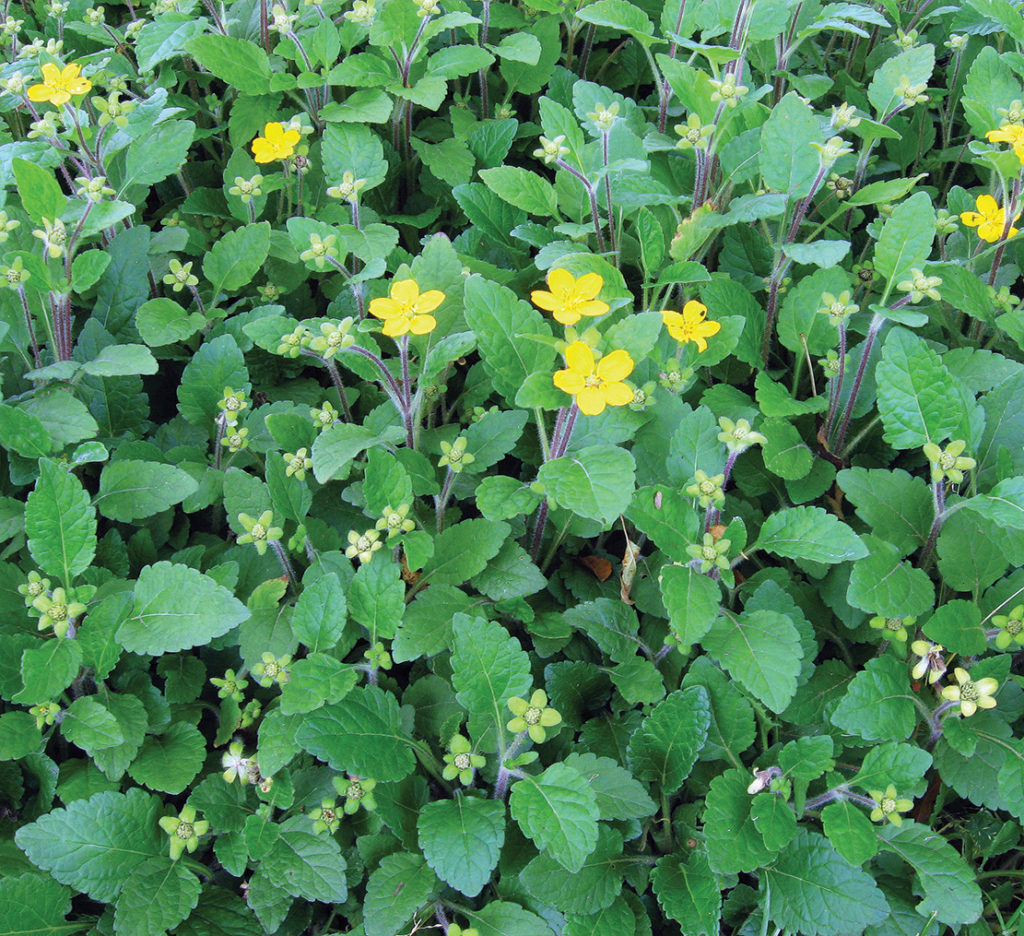
Native Alternative
If you like the look of fig buttercup, you can try native goldenstar (Chrysogonum virginianum), aka Green and Gold.
– Will Rowlands
